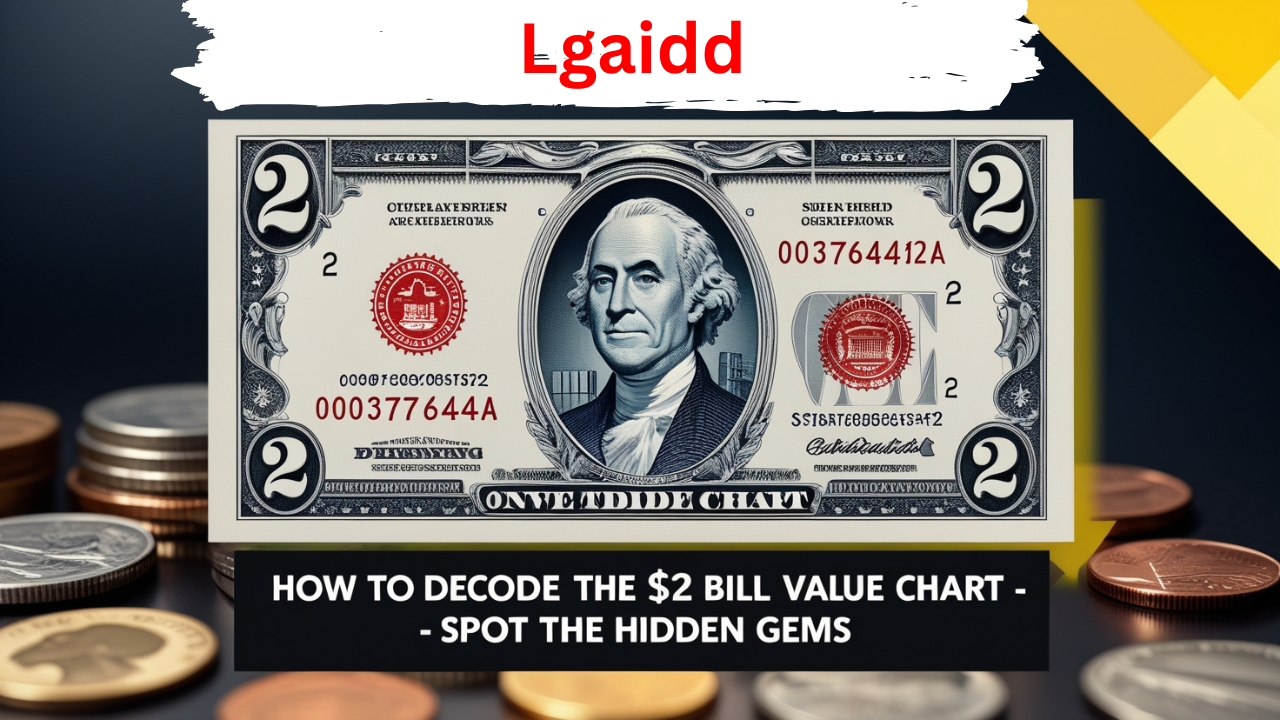How to Decode the $2 Bill Value Chart and Spot Rare Treasures: The $2 bill often flies under the radar in everyday transactions but holds a unique and intriguing place in U.S. currency history. While many see it as a quirky novelty, certain $2 bills are worth far more than their face value. Understanding what factors influence these values can help collectors and enthusiasts uncover hidden gems.
Decoding the $2 Bill Value Chart
Several factors play a crucial role in determining the value of a $2 bill:
1. Age and Series: Older $2 bills, particularly those from the 19th and early 20th centuries, are highly sought after. For example, uncirculated $2 bills from the 1890 series can command prices exceeding $4,500.
2. Condition: The condition of a bill significantly impacts its value. Uncirculated notes that have never been folded or handled fetch higher prices than bills showing signs of wear and tear.
3. Serial Numbers: Unique serial numbers can dramatically increase a bill’s worth. Low serial numbers (e.g., 00000001), patterns like palindromes, or “star notes” (replacement notes marked with a star at the end of the serial number) are particularly valuable.
4. Printing Errors: Errors like misaligned prints, ink smudges, or mismatched serial numbers make bills rare and highly desirable to collectors.
$2 Bill Value Chart
Here’s a breakdown of approximate values for various $2 bill series:
| Series Year | Seal Color | Circulated Value | Uncirculated Value | Key Features |
|---|---|---|---|---|
| 1862 | Red | $500+ | $1,000+ | First $2 bill issued during the Civil War era. |
| 1890 | Brown | $2,000+ | $4,500+ | Known as “Treasury Notes,” these are highly collectible. |
| 1928 | Red | $5 – $50 | $100+ | “Red Seal” notes; value varies by condition. |
| 1953 | Red | $2.25 – $6.50 | $12+ | Common among collectors; star notes are more valuable. |
| 1963 | Red | $2.25 – $6.50 | $12+ | Similar to 1953 series; star notes add value. |
| 1976 | Green | $2.50 | $4.50 | Introduced for the Bicentennial; first green seal series. |
| 1995 | Green | $2.25 – $3.25 | $18.50 | Star notes from BEP Millennium Folder are prized. |
| 2003 | Green | $2.25 – $3.00 | $900+ | BEP Premium Set star notes hold high value. |
| 2013 | Green | $2.10 – $2.25 | $2.25 – $3.00 | Modern bills, worth face value unless uncirculated. |
| 2017 | Green | $2.00 | $2.10 | Current series, generally worth face value. |
How to Identify Valuable $2 Bills
If you suspect your $2 bill might be a hidden treasure, follow these steps:
1. Inspect the Serial Number: Look for rare features such as low numbers, sequential patterns, or a star symbol (). For instance, a $2 bill with the serial number L 00000008 recently sold for $1,631, despite being in poor condition.
2. Assess Its Condition: Uncirculated bills hold the highest value. Even minor creases can significantly reduce a bill’s worth.
3. Check for Printing Errors: Look for anomalies like misaligned prints or mismatched serial numbers, which can make a bill exceptionally valuable.
4. Seek Expert Advice: Consult a currency expert or a reputable dealer for a professional appraisal if you believe your bill is valuable.
Conclusion
While many $2 bills are only worth their face value, certain characteristics can elevate their worth significantly. By understanding the factors that contribute to their value and carefully examining your collection, you may uncover a hidden gem that’s worth far more than $2.
FAQ
- Are $2 bills still in circulation?
Yes, $2 bills are still produced and circulated, though they are less common than other denominations. As of 2022, approximately 1.5 billion $2 bills were in circulation. - What makes a $2 bill valuable?
Factors like age, rarity, condition, unique serial numbers, and printing errors determine a $2 bill’s value. - How can I tell if my $2 bill is a star note?
Star notes feature a star symbol (*) at the end of the serial number, indicating they are replacement notes. - Where can I sell a valuable $2 bill?
You can sell collectible currency through auctions, online platforms, or reputable currency dealers. - Is a 1976 $2 bill worth more than $2?
In circulated condition, a 1976 $2 bill is typically worth about $2.50. Uncirculated examples can fetch up to $4.50.
